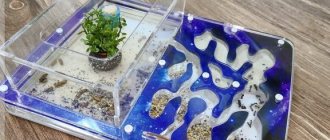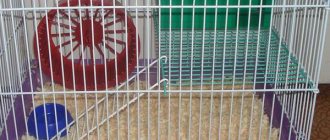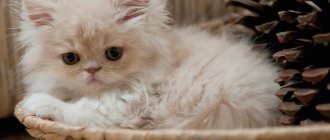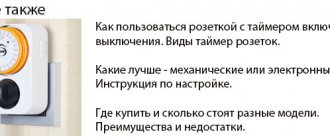Let's start with the main question, the answer to which is not yet available on the RuNet: what is a formicarium. The word itself is formed from two Latin words - formica, which means ant, and rium, which means buzzing or swarming. In modern Italian, when placed side by side, they form the phrase formica rium, which is translated into Russian as “anthill”. We’ll talk about what an ant farm, or simply an anthill, is, as well as how it turned out that an anthill became a form of home leisure.
History of origin
This part of the story is well known to experienced myrmecologists, but will be of interest to novice keepers. Let's look at a couple more new words right away. Myrmecology - the study of ants
. The word is formed from two ancient Greek words: myrmix, ant, and logos, doctrine. Keeper is modern slang. The word is derived from the English word keep - to keep. The keeper keeps a formicarium, that is, an anthill, and myrmecologists used to be called scientists of a narrow specialization, but today this is what they call breeders, as well as experienced farm holders.
Interesting:
The first ant farm to appear in the world was primarily a scientific project. Now it becomes clear where Latin and ancient Greek came from. After all, it appeared in the middle of the 19th century and was created by entomologists for purely scientific purposes.
The massive passion for natural history at the beginning of the 20th century led to the spread of domestic anthills and the gradual commercialization of their production. The insects turned out to be quite hardy and unpretentious, but provided great grounds for research and observation. They found a lively response and increased interest among teenagers
, as a result, demand gave rise to supply: in 1931, Frank Austin, serving as a professor at the school of engineering at Dartmouth College, in the USA, patented the first commercial model of a home anthill.
However, it was not his products that became most widespread, but “Uncle Milton’s Ant Farms”, or, simply, “Ant Farm” - whose creators came up with the idea of sending both the anthills themselves and their inhabitants by mail. The idea was doomed to success! All you need to do is leave an order and everything you need will be sent to your home. All that remains is to settle the colony on a farm to observe it. Over the past 60 years, more than 20 million anthills of this brand alone have been sold.
In America and Europe there is not even a question about what an ant farm is for. Parents know very well that this is a great way to keep their child busy and introduce him to science.
and at the same time teach responsibility. And many adults love this simple hobby.
Relocation of ants
I will analyze the most complex and common option. I take the hose for connection. I plug one end with cotton so that it can be easily pulled out, leaving a tail. If you do not plug the tube immediately, the ants may have time to escape.
1) An empty tube of suitable diameter 2) Plugged one end of the tube.
I wrap the other end tightly with cotton wool.
Wrap cotton wool around the tube. There's too much of it here.
Next I take a test tube. The task is to quickly pull out the current cotton wool from the test tube and insert our second end of the tube in its place. At the same time, one of the ants may have time to escape. They love to do this.
The colony is ready for relocation
The next step is to install the die for the tube in the opening of the entrance to the formicarium. I thread the relocation hose through it. I stick my hand into the arena and pull out cotton wool and a hose for relocation.
My die/rivet looked like this. Important: first we insert it into the formicarium, then we insert the relocation tube into it.
We combined an incubator and a formicarium.
It looked like this in life because I took too much cotton wool.
Now close the lid and cover with a cloth.
Let's go study myrmecology, just read a couple of books.
Formicarium device
Previously, trusses were made of glass, gypsum, gel, wood or sand and clay. Today, most keepers use acrylic and other polymers, but whatever the material, any formicarium, purchased or homemade, must have the following elements in its design.
Arena
A significant part of the social life of ants takes place here. Food is supplied here, a latrine is set up here, insects travel around the arena day and night, in search of building materials, as well as food. Life is always in full swing here. The arena is a space without partitions or compartments
, which is covered with decorative sand and also decorated with additional elements: figurines and stones. The upper part of the arena either has a lid or smooth open edges, and to prevent insects from escaping, the edges are treated with a special compound. If you take an arena with a lid, check for ventilation in it, this is important.
Move system
The interior is divided into many compartments and passages. For a small colony, three chambers are first opened, and the rest are separated by bulkheads, removing them as the colony grows. In one chamber there is a nest where the queen lays eggs, in another there is a pantry for food supplies, and in the third the ants can arrange something at their discretion, for example, a storage area for larvae or a garbage dump.
Humidification chamber
In modern formicariums, removable plaster inserts are used for humidification.
. They distribute moisture evenly, and if over time they begin to deteriorate and rot, they can be easily replaced. Depending on the size of the passage system, there may be one, two or more such inserts.
Important:
gel formicaria do not allow the use of additional food; the ants in them feed exclusively on the gel and, unfortunately, die within a few months. Therefore, you should not purchase them if you intend to engage in myrmecology seriously.
Portals are made in the side wall of the arena for the relocation or settlement of insects, to which special tubes of different diameters are connected. Usually 8 or 11 mm. Through these inputs, you can connect additional passage systems and arenas to expand the living space of the ants. Decorations with sand are added to it only after the ants have moved into the farm and transferred all their belongings to the nest. Otherwise, some of the larvae may get lost in the sand of the arena.
1.First select the ants
It would seem that this is an obvious rule, but often beginners do the opposite. Before purchasing a formicarium, you need to decide what type of ants you want to keep. After this, you need to study the characteristics of the species, and then choose a formicarium, taking into account all the characteristics. A few examples:
- The most popular ants among beginners - steppe harvesters - live in semi-deserts, and in nature they store seeds in long, dry chambers near the surface of the earth. Therefore, when choosing a formicarium, you should give preference to those models with a humidity gradient and large chambers for storing seeds.
- Tropical woodborers - such as Camponotus nicobarensis - live in the tropics and require high levels of humidity in the formicarium. Therefore, plaster models are better suited for them, where moisture lasts longer.
- Wood ants feel better in woody formicaria, etc.
Steppe harvester ants (Messor structor) queen + 10-20 workers
Of course, these are not all species with special requirements. But the rule is the same for everyone - first you need to find out what the ants need, and only then select the formicarium.
Ant size
And of course you need to take into account the size of the ants. Small tetramoriums will be afraid of large chambers, and large woodworms will not be able to pass through narrow passages. Therefore, in order to roughly assess whether formicaria are suitable or not, we came up with a simple rule - take the height of the uterus of your species in mm, multiply by 1.5 and get the optimal chamber height for a particular species. The size of the tunnels should be such that the uterus can turn around in it. Usually it is enough to make it the same size as the span of the queen's paws.
Types of ant farms
Today, acrylic ant farms are recognized as the most environmentally friendly, safe, durable, and, in addition, as practice has shown, also reusable, which is impossible for any other types of farms - these are systems of passages consisting of several layers of acrylic, in which stencil chambers are laser cut.
Good to know:
The bottom layer of the farms is matte white; it serves as a substrate on which the life of the colony is clearly visible. Then there are several transparent or full-color layers that form chambers with transitions, the top layer is completely transparent, and below it is a layer with a beautiful print depicting wood, grass, gravel or other design. For example, replacement AntPlanet Standard overlays can be purchased separately to change the pattern on the truss at any time.
Gypsum inserts become part of acrylic trusses
, designed to maintain the microclimate in the anthill. They absorb and retain excess moisture, releasing it during drought. They use special gypsum, which has increased strength and porosity; ants will simply chew regular gypsum. The accumulation and release of moisture allows you to moisten the anthill with gypsum less often. Plus, insects just love running around on it.
The following types of formicaria are conventionally distinguished by species:
- vertical, horizontal and free layout:
- Vertical
. The arena is located in the upper part, the system of moves itself is located vertically underneath it. - Horizontal
. The arena is on the side, the move system is on the side, placed horizontally. - Open plan
. This includes all homemade, unusual, combined designs. However, novice keepers are advised to buy ready-made systems of moves and arenas to avoid mistakes in planning, which can lead to the death or escape of insects
In addition, manufacturers such as AntPlanet divide into large and small farms, and also offer to purchase an arena separately from the passage system; if an incubator tube is attached to it, the test tube itself will play the role of an anthill.
What types of anthills are there?
So, a home anthill is called a formicarium, it can be compared to an aquarium, only instead of water and fish, we see filler and goosebumps.
There are simple and complex systems in which favorable conditions for the life of insects are automatically created, the correct temperature, humidity, and lighting are maintained. A formicarium can have completely different sizes, from small tabletop ones to huge ones that occupy large areas, it all depends on desire and capabilities. Regarding the filler, it can also be different, for example, gypsum, a mixture of soil and sand, gel.
There are quite popular models “Colosseum” and “Cubus”. The latter are available for sale in the form of a cylinder, cube or display that has double walls. The emptiness of melon products is filled with filler, which can be of different colors. In this filler, goosebumps build their passages and chambers. Regarding the price of such products, it is quite high, about 3 thousand rubles.
There are more affordable models, for example, anthills with helium filler. They are very similar to aquariums, the filling of which is a transparent gel. These formicariums are easy to care for; just open the lid once a week for ventilation. Their approximate cost is 50 rubles.
If we talk about such a filler as gel, it is completely safe for insects, just like for people. In addition to the fact that the gel is a filler, a habitat where goosebumps build their passages and chambers, it also acts as a nutrient medium.
Gypsum trusses can be called the most popular. They come in different shapes, sizes and are painted in all sorts of colors. The cost of such formicaria is on average 700 rubles.
Starter kits for beginners
Typically, an ant farm begins with an incubator tube, which plays the role of a farm for the first time, completely covering the needs of the queen and soldiers with workers for space and food. However, over time, the number of the colony grows, and a full-fledged farm becomes necessary for the comfortable existence of a large number of insects. By large we mean a population of more than 50 individuals.
Starter kits for beginners can be a solution for a novice keeper
, including a formicarium, why it is needed is described in detail above, as well as everything necessary for the first time, as well as a uterus with a colony for colonization.
Rules of care
High-quality purchased farms are equipped with temperature and humidity regulators. In order for ants to live long and their colony to function, a number of conditions must be met:
- Ants must be of the same species (insects of different species will be at enmity);
- The farm should be installed away from direct sunlight to avoid overheating;
- You should regularly moisten the formicarium - in gypsum and sand, gypsum and sand are moistened, in acrylic, a special sponge is placed;
- Ants are afraid of sudden changes in lighting and bright light;
- You cannot take insects from the street as food - they can be poisoned or carry infections.
- What food to give to ants depends on the species. There are species that feed exclusively on cereals, while others require protein foods. This usually comes with special food or dried insects.
It is not always possible to buy food for ants; ordering online can take a long time. In this case, dried insects from fish food, chicken, shrimp, etc. are suitable.
Microworld on a bookshelf
This is what a formicarium is. You can spend an exciting time with him, not just one or two evenings, but many weeks and months. If you read the forums of myrmecologists, it becomes clear that they treat their colonies as an expensive and important part of life, worry if something goes wrong, and rejoice at new ants appearing in the anthill.
By class, insects are divided into foragers and soldiers, whose responsibilities include protecting the anthill and obtaining food; workers responsible for maintaining cleanliness and order; scouts discovering new territories; nannies responsible for the brood, as well as the queen, which constantly reproduces new workers and soldiers.
Fun facts:
, for every person on earth there are about a million ants; Most of the ants in the anthill are female—the males hatch separately for the breeding season and die almost immediately after it. And the anthill is a perfect example of communism, but with a monarch at its head.
Once you start studying myrmecology, it is almost impossible to quit it
. There are thousands of species of these insects, and after long observations of a colony, you begin to recognize individual individuals and look at them as if they were old friends. It is not for nothing that myrmecology has become widespread throughout the world. And recently this hobby has begun to gain popularity in Russia.
No need to be afraid: caring for an ant farm is not that difficult. All the necessary information is in the public domain, and equipment that was previously made by hand by myrmecologists is now sold completely freely. So, answering the question: what is an ant farm? We can safely say that it is a modern, interesting and useful leisure activity for the whole family!
Adviсe
Once you get the ants, distract them with sugar and water to reduce the aggression while you search for the queen. Do not overdo it! Red ants are usually very aggressive, while black ants are generally more passive. For greater effect, you can also plant grass seeds on top. Water the grass carefully to avoid drowning the ants. Don't knock over the jar in the house! A cardboard toilet paper tube makes an excellent pipe. If you are going away for a long time, it would be a good idea if you leave someone to look after the ants so that they do not die from desiccation or starvation. Don't touch the queen, otherwise the rest of the ants will bite you. Ants require the same care as cats or dogs.
Pay attention to them!
How to build a formicarium
Now let's proceed directly to the construction of the farm. I must say that this is a very interesting and exciting process where you can use your creativity. Below are the most commonly used models of ant houses.
Important! Before starting work, you need to take a closer look at the life of ants. Information can be gleaned from books, found on the Internet, or simply asked by experts on keeping these insects at home. This knowledge is important for achieving success in this business!
Soil-sandy
To make this housing option, you need to select two plastic jars with tight lids (you can also use glass containers). Their size should be such that one fits freely into the other and there is still some free space left.
Next, do the following:
- In a smaller jar, close the lid tightly and place in a larger container;
- pour a soil-sand mixture in a 2:1 ratio between the jars;
- take a small stick, make a depression in the filler, place the ants there and the work will begin to boil;
- close the outer jar with a lid, but first make small holes in it for ventilation;
- very soon the insects will dig tunnels for themselves, and you will be able to observe their life;
- food for ants is placed on the lid of the inner jar.
Important! Do not use paper or fabric as covers; ants can easily gnaw through such materials and spread throughout the house.
With gel filler
This type of formicarium is very convenient, since the gel is a universal material in which tunnels can be dug, offspring can be raised, and even consumed as food. Pet stores sell a ready-made gel composition made from seaweed. It is made colored (usually blue) and transparent. But you can make the gel with your own hands.
DIY gel
To do this, take:
- food gelatin (15 gram package) – 3 pcs.;
- hot water – 1 l;
- flat transparent plastic container with a lid.
Pour half the hot water over all the gelatin and dissolve completely by stirring, then add the rest of the water. Pour the resulting composition into the prepared container and place in the refrigerator. Wait until the gel hardens, then take it out and warm it to room temperature. Now you can make a hole and move residents there.
Ants in a farm with gel
Insects feel great in the gel farm: they dig tunnels, feed, and so on. This is perhaps the best formicarium option for busy people. Its main feature is that ants do not need anything to drink or eat; their source is the gel.
And when the gel runs out, just add a new portion. Such manipulations can be carried out as many times as desired.
Did you know? Ants engage in animal husbandry by raising aphids, which provide them with sweet nectar. Just imagine a herd of aphids grazing peacefully under the supervision of ant guards!
From plaster
To make a gypsum ant farm with your own hands, you will have to spend more time, because... you need to wait for the material to harden
Required tools and materials
To create a gypsum farm, you will need:
- capacity;
- gypsum mortar;
- water;
- cocktail straw;
- pencil;
- drill;
- stationery knife.
Step-by-step manufacturing instructions
The first step is to prepare a container for diluting gypsum. Mix water and plaster until the consistency of thick sour cream. Next, you need to leave it to harden for 5-7 days. Carefully remove the dried mass from the container. Use a pencil to draw future moves and exits. You can use a utility knife to drill small paths. Place the finished structure in an aquarium or jar of a suitable size. Make holes in the lid to allow air to enter. In order to moisten the ants' habitat and feed them, insert cocktail straws.
How and where to choose the right ants
The first step is to select insects to keep. This can be done in two ways:
- Make a purchase in pet stores (usually online stores). There you will additionally be offered a complete list of materials necessary to create a comfortable ant home. This option, of course, is very convenient, but there are also disadvantages - high cost and the risk of ants dying during transportation, especially if the store is located in another city. In addition, in most cases in such places ants are sold without a queen, which is responsible for reproduction. This means that your farm will last about two months until all its inhabitants die.
- Find an anthill in a park, garden or forest and recruit pets yourself. You can even get the soil they are used to. But ants caught in this way will also not be able to reproduce. Therefore, it is best to find an anthill during the mating flight and catch the queen. Such an anthill is easy to notice: these insects have wings and accumulate en masse on the surface in order to fly away to create new colonies. By placing the queen in a formicarium, after some time you will receive a full-fledged colony. The main thing is to wait until the larvae mature, the farm will gradually fill with ants and begin to live its own life.
Important! You should not destroy the anthill in search of the queen; by doing this you will not only harm nature, but also doom this colony to extinction: only the queen bears offspring. In addition, after the creation of a new colony, the queen’s wings disappear, and given the huge horde of insects, it will be quite difficult to distinguish her.
Preparing the gel
Pour three sachets of gelatin (15 g each) into 0.5 liters of hot water, stir well until the gelatin is completely dissolved. After this, add another 0.5 liters of water. Pour the finished mixture into a container and place it in the refrigerator. When it hardens, take it out and wait until the gel mass reaches room temperature.
Aquarium gel can be bought ready-made in the store, but it’s more interesting to make it yourself. You should know that such a filler for an ant house is not only a habitat, but also food. As soon as you make a small depression in the gel and place ants in it, they will immediately begin to “eat away” their passages and build tunnels. Let us remind you once again that ants living on a gel farm do not need to be fed or watered. The gel is a source of moisture and food for them.










